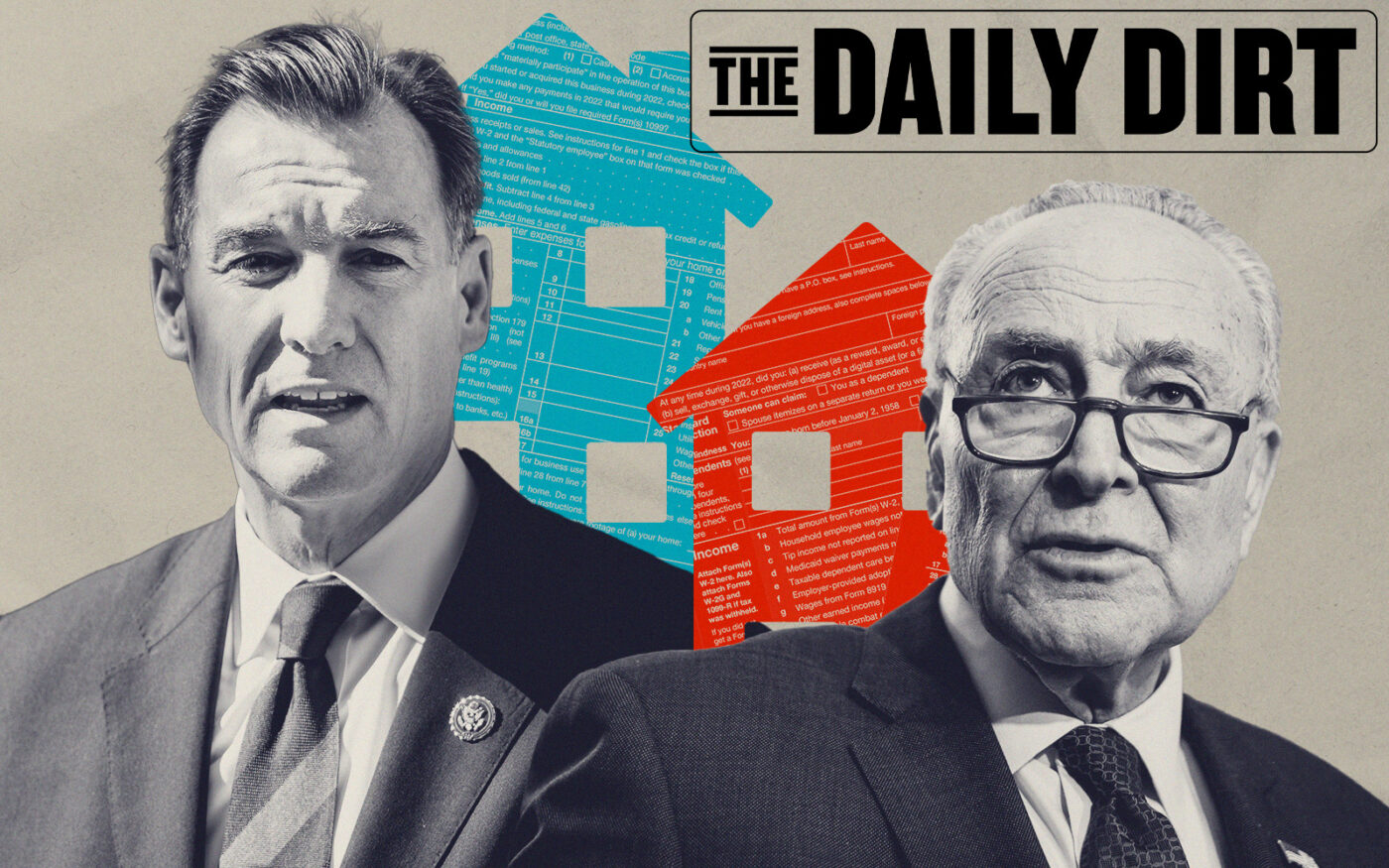Trending
The Daily Dirt: SALT saga’s humbling lesson for real estate
Republicans’ punishment of blue states had NY up in arms

The New York real estate industry was alarmed and a bit scared when congressional Republicans capped state and local tax deductions at $10,000.
That was in late 2017, and then-President Donald Trump quickly signed the sweeping bill that included the so-called SALT cap. Later, Trump was surprised when Senate Majority Leader Chuck Schumer told him about the cap. (A detail-oriented president, he was not.) But it was a central focus for New York’s real estate observers.
Property and local income taxes run into the tens of thousands of dollars for most home buyers, and no longer being able to deduct the full amount from federal income seemed like a sea change.
Before the bill passed, housing and realty groups warned of reduced sales and property values. The National Association of Realtors predicted home prices would decline, especially in high-cost coastal markets.
When the law took effect in 2018, the outrage that they and blue-state Democrats expressed surely worsened its negative impact on the market. Fewer New Yorkers bid on homes because they expected the new law — which also limited the deductibility of mortgage payments on expensive residences — would send prices down.
Sales did slow initially. But in 2019, the second year of the tax reform, the effect largely disappeared.
“Buyers have digested the situation and are moving on,” Angela Retelny, a Compass agent in Westchester County, told The Real Deal at the time. “Tax deductibility was a great factor in 2018, and the market stalled for a while until buyers understood the full impact and sellers realized that the market has changed.”
Then came Covid and ultra-low interest rates. By 2021, the market was in a frenzy and homes were selling within days of being listed. The SALT cap was the last thing on anyone’s mind.
But not all Democrats have forgotten. Rep. Tom Suozzi, who is trying to win back the Long Island/Queens House seat he vacated (only to see grifter George Santos win it), is campaigning on the issue. “I will again rebuild the bipartisan SALT caucus,” Suozzi said this week.
There are certainly good arguments for lifting the cap, which accelerated the transfer of wealth from blue states to red states — although less than expected, because blue-staters’ deductions were already limited by the alternative minimum tax.
For the real estate market, however, the SALT cap proved to be a blip, even if it drew some luxury buyers to Florida. For the broader market, the big problem since the tax reform has not been that housing prices have fallen, but that they have soared.
The SALT saga serves as a reminder that predictions of doom should be soberly examined, not taken as gospel.
What we’re thinking about: Do you think the cap on state and local tax deductions should be raised from $10,000, removed entirely, or left as is? Email eengquist@therealdeal.com.
A thing we’ve learned: Last year was the busiest ever for the metro area’s three major airports. The Port Authority of New York and New Jersey estimates that 144 million passengers flew through JFK, LaGuardia and Newark Liberty International. That was 3 percent above the previous record of 140 million passengers in 2019, the last year before the pandemic. All three airports topped their previous highs for domestic passengers.
Elsewhere in New York…
— The MTA just rolled out open gangway subway cars on the C line, which runs between 168th Street in Washington Heights and East New York. The cars have more seating and wider doors for faster boarding and exiting, among other improvements. It’s the first time such cars have been deployed in 59 years in the U.S. The Brooklyn–Manhattan Transit Corporation, which New Yorkers of a certain vintage remember as the BMT, ran three-car open gangway segments from 1925 to 1965.
— Long Island Housing Services continues to nail landlords for discriminating against rental voucher holders. The fair housing agency’s testers pose as prospective Section 8 tenants and record calls with housing providers.
The latest to flunk the test was Willow Lake Apartments, a 72-unit complex in Smithtown, which allegedly told a caller that applicants must have a credit score of 680 or higher and earn three times the annual rent, or $90,000, Newsday reported.
That was an expensive call, it turned out: LIHS brought a case and Willow Lake settled for $19,500. It’s the latest in a series of small settlements.
— What’s the delinquency rate for office building loans? No one knows. That’s because most of them are private, and information about them doesn’t spill out into view unless there’s a lawsuit or foreclosure filing.
But some office loans are bundled, securitized and sold to investors as CMBS, and those are public. Their delinquency rate in January was 6.30 percent, up from 1.86 percent a year ago, according to Trepp. Office is now the most troubled sector in CMBS, as the retail delinquency rate ticked down to 6.27 percent last month. Industrial is in the best shape (0.4 percent), followed by multifamily (1.91 percent).
Closing Time
Residential: The priciest residential closing Thursday was $20 million for unit PH88B at 553 West 30th Street, a condominium also known as 15 Hudson Yards — the subject of a failed “poor door” lawsuit.
Commercial: The most expensive commercial closing of the day was $7.5 million for a three-unit house at 187 Washington Park in Fort Greene. The same property went into contract in 2018 when it was listed at $3.6 million.
New to the Market: The priciest residence to hit the market Thursday was a condo at 432 Park Avenue in Midtown asking $33 million. Tal Alexander has the listing.
Breaking Ground: The largest new building filing of the day was for a project not large at all: a 240-square-foot, detached, one-car garage at 168-19 12th Road in Whitestone. BFS Architect filed the permit application.




